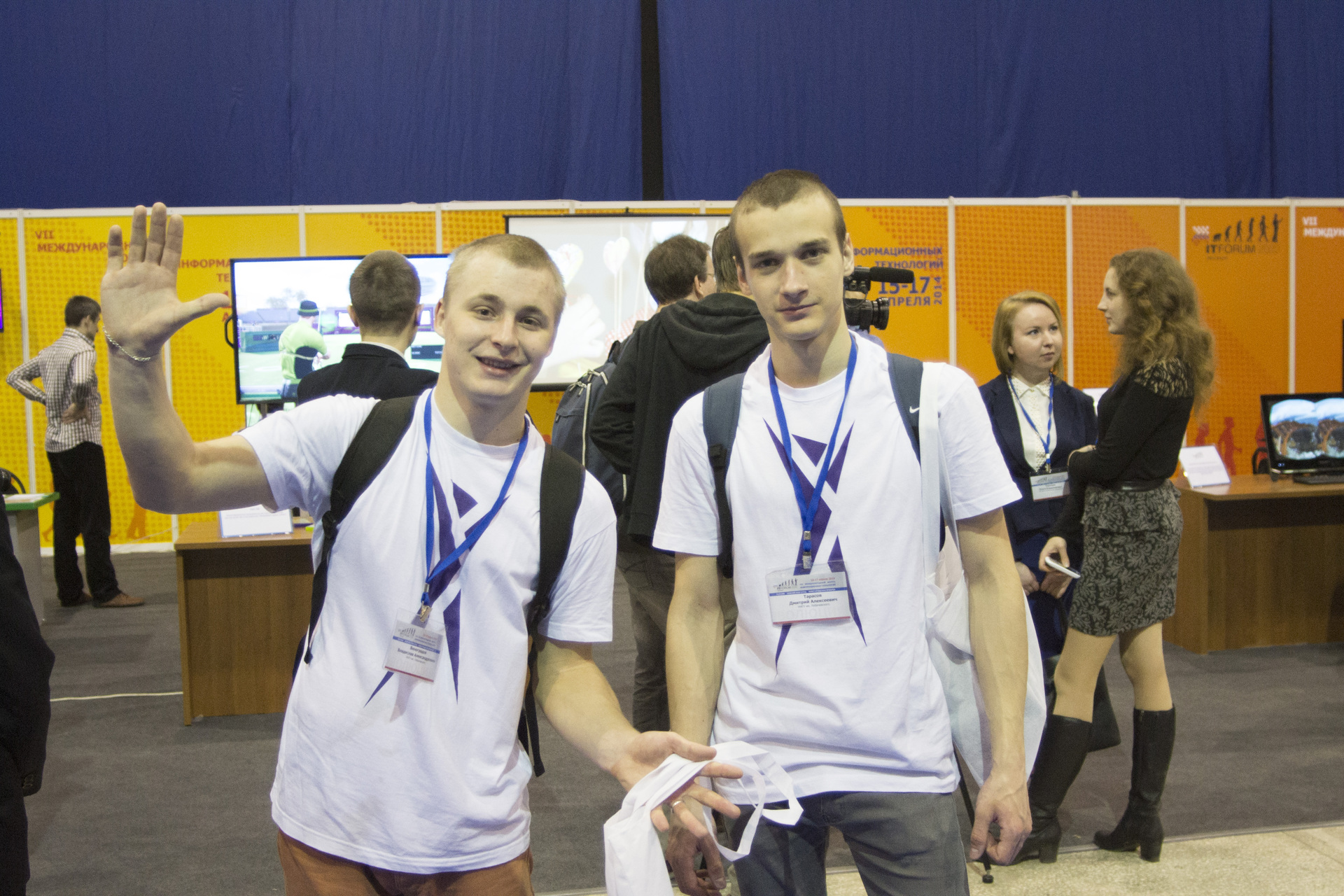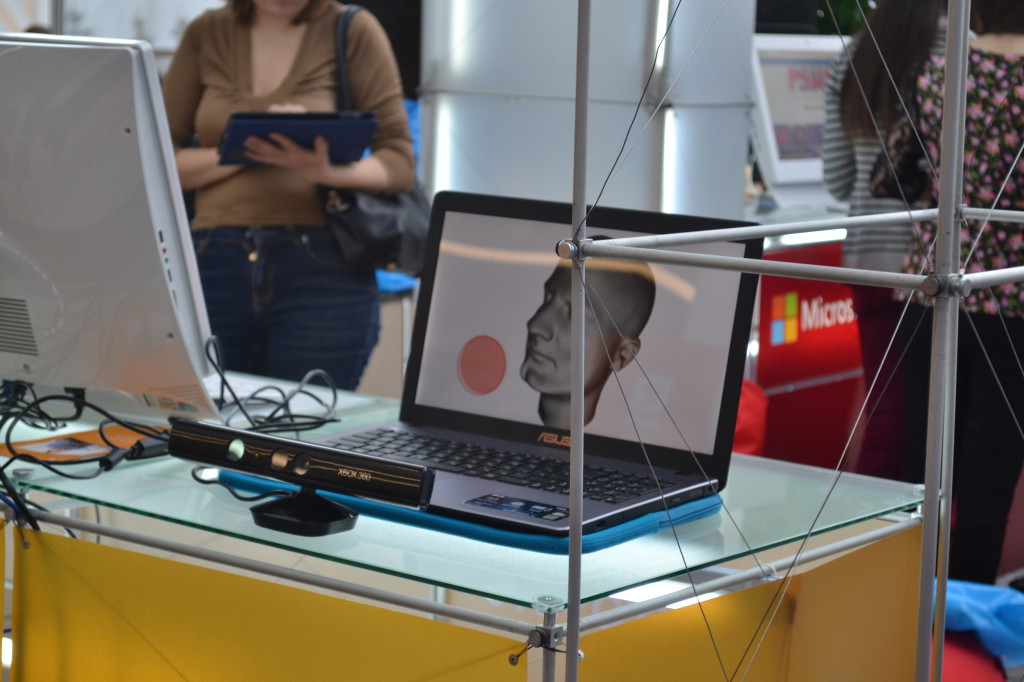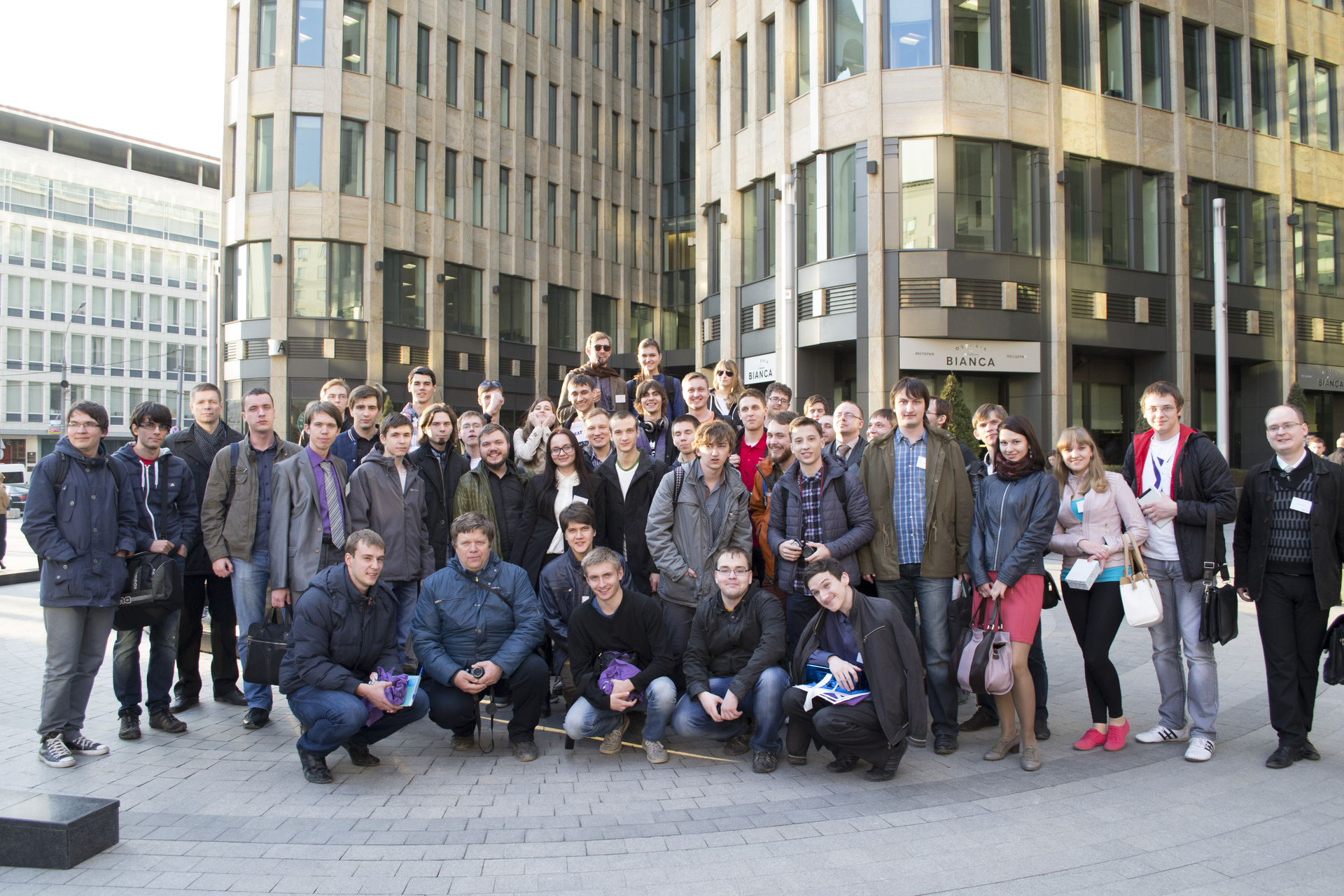Imagine Cup 2014, the first experience of participation and how it was
Hello friends. My name is Dmitry. I want to tell you my story about participating in the Imagine Cup. What good is student time? We can do without ordinary phrases, I can only say that behind the student’s red eyes, sleepless nights and eternal fatigue lies a rich and, oddly enough, the most free time in life.
It was fall 2013. While I was writing boring university labs, my soul was hungry for adventure. I heard about the technological competition of student projects Imagine Cup back in school and, of course, I dreamed of participating in it. Now I was in my second year and understood that the time had come! It's time to join the stream of real student life. Together with my like-minded friend Vladislav, it was decided to create a team and conquer such a glorious contest.

We faced a basic task - to come up with an idea. It's time to remember all the old ideas and work on creating new ones. After several weeks of wandering around the halls of the mind and brainstorming, we got a small list of different ideas, from which we had to choose one single, breakthrough idea. We went for advice to the teacher of our university (Nizhny Novgorod State University named after N.I. Lobachevsky) Sergey Sidorov, who participated in ImCup three times and in 2009 with his team took second place in the international final. Inspired by communication with an experienced participant in the competition, we already no doubt knew what we would do.
Our project is a quick 3D prototyping system using gestures. The project was conceived as the embodiment of modern computer technology in the creative activities of man. We took up the task of virtualizing the activities of the sculptor. The bottom line is to enable a person to “sculpt sculptures” using a computer, while not having in his hands either material or tools. The name of the project was given corresponding - Sculpt Art .
We faced the task of tracking human movements and changing the 3D object accordingly. It was necessary to create your own interface of gesture interaction with the user and to develop algorithms for the deformation of 3D models. In our environment, the Kinect sensor was the best fit for the tracking task. This was followed by a long stage of wandering in the selection of the necessary platform with support for the Kinect sensor and the ability to 3D-visualize. As a result, we settled on a desktop WPF application. The development involved the Kinect SDK and 3D Tools for the Windows Presentation Foundation.

The main feature of the application in our plans was to print the finished model on a 3D printer. In January 2014, visiting the Geek Picnic Festival of Science and Art in Moscow and seeing a huge number of 3D printers, we fully experienced the rapid development of this industry, after which we began to focus on the development of the project specifically for 3D printing.
It is time to apply for the competition. At that time, we did not have a working prototype, but we filled out an application and soon received an invitation to the regional finals in the city of Kazan. Leaving behind the most difficult part of the path, namely the implementation of the prototype in a short time to the regional finals, we were ready to conquer the capital of Tatarstan.
The long-awaited trip arrived, I’ll leave behind the scenes stories about how we forgot passports for boarding the train, about how the local police in the metro already detained us in Kazan before identifying ourselves, I can only say that we were late for the Imagine Cup. Tardiness was not critical, and we still performed! Among 11 participating teams we took first place and reached the Russian final.

There were two of us along this path and we did not expand the team (although according to the rules of the competition, there can be up to 4 people in the team), and this was one of the mistakes. Ahead was a lot of work and preparation for the final, we felt a real lack of human resources. We had to be torn between the development, solving organizational issues, preparing for the exhibition, printing the first 3D models created in our program, and a bunch of various small problems. Remained a few days before a trip to Moscow. To test our application and show it to a wide audience, we went to the International IT-forum, which was held in Nizhny Novgorod.
A short video from the exhibition:
Soon we went to Moscow, this time the trip did without adventures. On the first day, an accelerator for the teams was held, where participants got the opportunity to get to know each other, properly prepare the presentations of their projects and get advice from professionals. On the second day, the teams performed. Our performance was not very successful, we could not present the project from the right side and win the hearts of the jury chairmen. We did not take the prize place in the competition, but having heard a lot of constructive criticism towards the project, we began to rethink the idea of the project.

Now we plan to continue working on the project and are at the stage of choosing a new development path that could lead us to create a full-fledged product that is relevant in the modern market. We hope that next year, taking into account all the mistakes, we will be able to win in such a glorious contest.
What did the Imagine Cup give me? Throughout the journey, I gained tremendous experience in the development, presentations, communication with people, I discovered for myself the priorities of personal development and, in the end, had fun! I am sure that I will remember the contest only with a smile on my face.

Imagine Cup 2014 , Feel Future Team , Sculpt Art Project
The beginning of the way
It was fall 2013. While I was writing boring university labs, my soul was hungry for adventure. I heard about the technological competition of student projects Imagine Cup back in school and, of course, I dreamed of participating in it. Now I was in my second year and understood that the time had come! It's time to join the stream of real student life. Together with my like-minded friend Vladislav, it was decided to create a team and conquer such a glorious contest.

From idea to prototype
We faced a basic task - to come up with an idea. It's time to remember all the old ideas and work on creating new ones. After several weeks of wandering around the halls of the mind and brainstorming, we got a small list of different ideas, from which we had to choose one single, breakthrough idea. We went for advice to the teacher of our university (Nizhny Novgorod State University named after N.I. Lobachevsky) Sergey Sidorov, who participated in ImCup three times and in 2009 with his team took second place in the international final. Inspired by communication with an experienced participant in the competition, we already no doubt knew what we would do.
Our project is a quick 3D prototyping system using gestures. The project was conceived as the embodiment of modern computer technology in the creative activities of man. We took up the task of virtualizing the activities of the sculptor. The bottom line is to enable a person to “sculpt sculptures” using a computer, while not having in his hands either material or tools. The name of the project was given corresponding - Sculpt Art .
We faced the task of tracking human movements and changing the 3D object accordingly. It was necessary to create your own interface of gesture interaction with the user and to develop algorithms for the deformation of 3D models. In our environment, the Kinect sensor was the best fit for the tracking task. This was followed by a long stage of wandering in the selection of the necessary platform with support for the Kinect sensor and the ability to 3D-visualize. As a result, we settled on a desktop WPF application. The development involved the Kinect SDK and 3D Tools for the Windows Presentation Foundation.

The main feature of the application in our plans was to print the finished model on a 3D printer. In January 2014, visiting the Geek Picnic Festival of Science and Art in Moscow and seeing a huge number of 3D printers, we fully experienced the rapid development of this industry, after which we began to focus on the development of the project specifically for 3D printing.
It is time to apply for the competition. At that time, we did not have a working prototype, but we filled out an application and soon received an invitation to the regional finals in the city of Kazan. Leaving behind the most difficult part of the path, namely the implementation of the prototype in a short time to the regional finals, we were ready to conquer the capital of Tatarstan.
Regional finale
The long-awaited trip arrived, I’ll leave behind the scenes stories about how we forgot passports for boarding the train, about how the local police in the metro already detained us in Kazan before identifying ourselves, I can only say that we were late for the Imagine Cup. Tardiness was not critical, and we still performed! Among 11 participating teams we took first place and reached the Russian final.

There were two of us along this path and we did not expand the team (although according to the rules of the competition, there can be up to 4 people in the team), and this was one of the mistakes. Ahead was a lot of work and preparation for the final, we felt a real lack of human resources. We had to be torn between the development, solving organizational issues, preparing for the exhibition, printing the first 3D models created in our program, and a bunch of various small problems. Remained a few days before a trip to Moscow. To test our application and show it to a wide audience, we went to the International IT-forum, which was held in Nizhny Novgorod.
A short video from the exhibition:
Russian finale
Soon we went to Moscow, this time the trip did without adventures. On the first day, an accelerator for the teams was held, where participants got the opportunity to get to know each other, properly prepare the presentations of their projects and get advice from professionals. On the second day, the teams performed. Our performance was not very successful, we could not present the project from the right side and win the hearts of the jury chairmen. We did not take the prize place in the competition, but having heard a lot of constructive criticism towards the project, we began to rethink the idea of the project.

Now we plan to continue working on the project and are at the stage of choosing a new development path that could lead us to create a full-fledged product that is relevant in the modern market. We hope that next year, taking into account all the mistakes, we will be able to win in such a glorious contest.
Conclusion
What did the Imagine Cup give me? Throughout the journey, I gained tremendous experience in the development, presentations, communication with people, I discovered for myself the priorities of personal development and, in the end, had fun! I am sure that I will remember the contest only with a smile on my face.

Imagine Cup 2014 , Feel Future Team , Sculpt Art Project
Words of gratitude
I would like to thank Microsoft for the annual competition of the Imagine Cup, Sergey Sidorov for inspiration, Alexey Solodovnikov for valuable advice, friends and relatives for their support, the Laboratory of Physical Foundations and Wireless Technologies of UNN for a 3D printer and Boris Tereschenkov separately for help.
